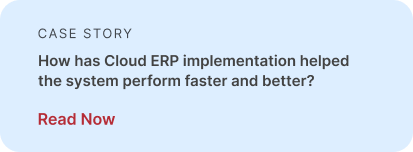Pharmaceutical Supply chain: A Brief Overview
Many people may not realize that the pharmaceutical industry has one of the most complex supply chains to manage. This is because there are many suppliers and consumers, which makes pharma supply chain management a major challenge.
In addition, manufacturing, quality control, packaging, and shipping are all essential components of the pharmaceutical supply chain.
Implementing ERP in healthcare streamlines operations, reduces the risk of human error, and ensures balance across functions. It helps you view real-time data, which allows you to make better choices and ensure optimum supply chain management in pharma industry.
Consequently, work procedures become more efficient, the price of services falls, and customers feel more satisfied.
To gain deeper insight, we will explore this write-up to understand how the pharma supply chain works, what challenges it encounters, and how Microsoft Dynamics 365, an ERP system, enables companies to be more secure and obey rules.
But first, let’s understand the supply chain in pharma industry.
What is Pharma Supply Chain?
Supply chain management in pharma refers to the steps and people responsible for producing and distributing pharmaceutical items. Among its core aspects are buying raw materials, manufacturing, controlling quality, packaging, labelling, and shipping.
It begins with sourcing and gathering raw materials, which are then used to manufacture pharmaceuticals. After that, the finished medicines are sent to pharmacies, hospitals, and other healthcare establishments, and patients can receive them.
Moreover, the prominent laws and conditions of Canada’s market add unique features to its pharma supply chain. Health Canada requires that Canadian drug companies ensure their goods are safe, effective, and consistently of high quality.
However, Canada’s vast geography and dispersed population pose unique logistical challenges for pharmaceutical distribution, which will be discussed later in this article.
How The Pharma Supply Chain Works
To make certain that patients get their medications safely and quickly, pharma companies make great efforts to ensure everything in their supply chain is in order. So, here are the stages of a typical supply chain that leads from sourcing quality raw materials to delivering medicines to the patients.
Raw Material Sourcing and Manufacturing
It all begins by obtaining pure and accurate materials, which are then turned into products using manufacturing techniques. This is an important step as it becomes the guide for the whole supply chain.
Also Read: Manufacturing ERP
Quality Control Checkpoints
Product quality is checked by implementing control points at key steps in the manufacturing process. These checkpoints ensure that deviations from standards are detected and addressed promptly.
Documentation Requirements
It is important to keep clear records to follow the rules set by regulators. You should keep records of sourcing raw materials, manufacturing processes, and quality control measures.
Distribution Channels
From the point of manufacture, pharmaceutical products are sent out to customers using several networks and channels. They may be distributed directly to pharmacies and hospitals or through authorized distributors.
Last-Mile Delivery and Patient Access
The final stage of the process is to give the products to the patients. If last-mile delivery is effective, medicines can get to patients in a timely way.
Traceability Throughout the Supply Chain
Traceability ensures that every stakeholder can follow products throughout the process. Such results are made possible by implementing serialization and tracking methods.
Also Read: ERP Supply Chain
Pharma Supply Chain Challenges
A few pharma supply chain issues can pose threats to the safety and quality of products used for healthcare. They come up in many parts of the pharmaceutical supply chain, from regulatory compliance to product security:
Regulatory Compliance Hurdles
It is a major challenge to move through the many different regulations. Pharmaceutical companies must meet both Health Canada and international standards.
Health Canada Requirements
The pharmaceutical industry in Canada is governed by strict standards like Good Manufacturing Practice (GMP) and Good Distribution Practice (GDP), set by Health Canada.
International Standards Alignment
It is very important to observe the rules established by the World Health Organization (WHO) and the International Conference on Harmonization (ICH).
Temperature Control and Product Integrity
The potency and safety of pharmaceutical products can only be preserved by consistently maintaining appropriate temperature ranges.
Inventory Management Complexities
Effective inventory management is essential to prevent stock outs, overstocking, and expiry of products. For this reason, companies need to depend on modern forecasting and monitoring tools.
Supply Chain Visibility Gaps
If suppliers and partners do not have clear visibility, the processes and risks could increase. Implementing tracking and tracing technologies can assist with dealing with this issue.
Counterfeit Products and Security Concerns
Counterfeit items being included in the supply chain is a major worry. Assuring better protection and partnership with regulating groups can reduce this issue.
After discussing its challenges, now let’s discover the role of ERP in pharma industry.
Role Of ERP In The Pharmaceutical Industry
With changes occurring in the pharma industry, supply chain management software and ERP solutions are vital for healthcare companies. ERP allows companies to handle different parts of their business, work efficiently, and meet regulatory requirements.
Core ERP Modules for Pharmaceutical Companies
Specific modules in ERP software help pharma companies handle the special needs of their business.
Some of the main modules are listed below:
Supply Chain Management Module
It allows businesses to oversee their supply chains, starting with buying resources and finishing with product delivery. It is an important feature in supply chain management software.
Quality Management Module
With the quality management module, pharmaceutical companies make sure their products live up to their quality standards.
Regulatory Compliance Module
It supports pharmaceutical companies in following regulations, which lowers the risk of not complying and facing related penalties.
Note: From optimizing your warehouse management system to managing compliance with ease, the right ERP strategy can redefine your pharma business.
How ERP Solutions Resolve Pharma Supply Chain Challenges
ERP system offer an integrated solution to address the various challenges across the pharmaceutical supply chain. Pharmaceutical companies use ERP solutions to link various functions and therefore make their operations more efficient, save money, and improve overall performance.
Here’s how it helps:
- End-to-End Visibility: Know exactly where each product is in the supply chain, from raw material to patient delivery.
- Automated Compliance: Built-in checks and alerts help ensure that all operations align with local and global health regulations.
- Smarter Inventory Planning: Use historical trends and real-time data to forecast demand and avoid stock issues.
- Batch & Expiry Tracking: Reduce waste and recalls by monitoring batch numbers and expiry dates with precision.
- Enhanced Reporting & Insights: Get instant reports to support audits, inspections, or decision-making, no more data hunting.
If you're looking to overcome pharma supply chain challenges and grow in the Canadian market, consider a tailored ERP solution from Dynamics Square.
Benefits Of ERP Implementation In Pharma Supply Chain
Implementing an ERP system can offer several benefits. It includes:
Cost Reduction & Process Efficiency
ERP allows you to automatically handle purchasing, improve the logistics process, and control inventory better, which reduces your overall expenses.
Improved Product Safety & Compliance
Checking quality in real-time shows that products meet tough regulations and helps avoid any need for recalls.
Data-Driven Decision-Making
Having dashboards and predictive analytics gives companies the ability to anticipate demand and handle their operations wisely.
Scalability and Flexibility
ERP systems can keep up with a business’s development, adapt to market trends, support new types of products, and extend to new geographical areas.
Competitive Edge
Strong monitoring and decision-making solutions give businesses a better standing in the Canadian pharmaceutical market.
How Dynamics Square Can Transform Your Pharma Operations
Managing the pharmaceutical supply chain is not easy. It requires dealing with complicated logistics, strict rules, and market demands that change quickly. Dynamics Square makes this complicated process easier with Microsoft Dynamics 365-powered advanced ERP solutions.
As Dynamics Square has a lot of experience with Dynamics 365 implementation, pharmaceutical companies can be sure that they will be able to see their entire supply chain, make their operations more efficient, and follow all the rules. Our solutions, such as an advanced inventory management software and warehouse management in D365, give you more control, accuracy, and efficiency over warehousing, inventory, or demand planning.
Dynamics Square makes sure that your pharma business in Toronto and all over Canada is following both compliance rules and changes in the industry.
Call us at +1 778 381 5388 or email us at info@dynamicssquare.ca to find out how we can help you create an ERP system that is ready for the future and designed for success in the pharmaceutical industry.
People Also Ask:
What is the supply chain of pharma?
The pharmaceutical supply chain means the process medicines take from being made in a laboratory to reaching your hands. There are several actions taken to guarantee that the medicines you receive are not harmful and effective.
What are the 5 stages of the supply chain?
- Research & Development (R&D)
- Manufacturing
- Packaging & Labeling
- Distribution
- Dispensing
What is the future of the pharmaceutical supply chain?
In the future, AI will help with supply chain predictions. Moreover, eco-friendly methods will be used for packaging, and medicine will be made in many different locations.
What is the pharmaceutical supply chain management cycle?
Using the management cycle means medicines are chosen, bought, kept safe and given out properly. It involves selection, estimation, procurement, storing, and distribution.



